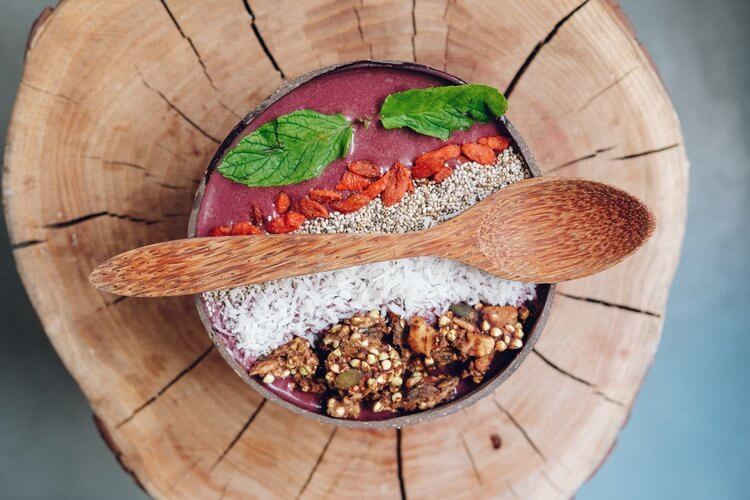For some people, superfoods are yet another marketing gimmick that narrows down focus to a few ‘power foods’. For others, they’re the new horizon in making the most out of our daily diet in terms of nutrition, vitamins and minerals. Let’s take a deep dive into seven superfoods and how they interact with our metabolic health to help our digestion, weight management, gut well-being and mental health.
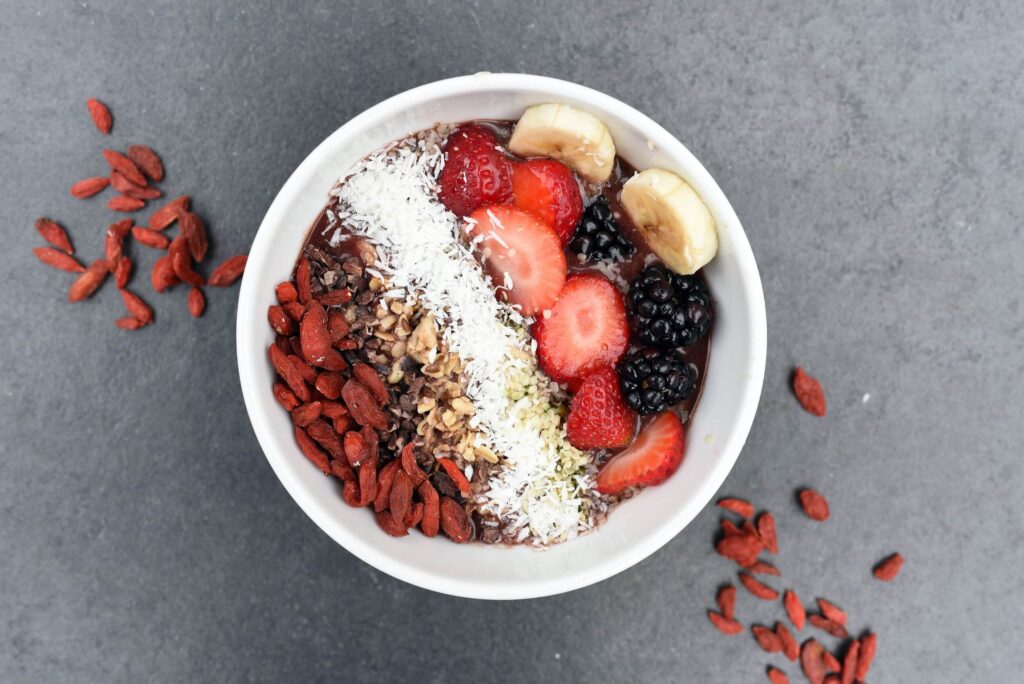
Highlights
- Superfoods are plant-based foods that offer maximum nutrition for minimal calories and are usually packed with minerals, antioxidants and vitamins,
- Antioxidant molecules found in superfoods can mitigate or decrease the effects of free radicals that are known to cause health problems,
- Superfoods are easy to consume and can be added to various foods in a variety of diets with little to no preparation.
What are Metabolic Superfoods?
Superfoods are plant-based foods that offer maximum nutrition for minimal calories and are usually packed with minerals, antioxidants and vitamins. Antioxidants can be defined as natural molecules that neutralise free radicals in the human body. Free radicals can be defined as natural byproducts of energy production that lead to cell damage and accelerate the ageing process.
Antioxidant molecules found in superfoods can mitigate or, at the very least, decrease the effects of free radicals that are known to cause health problems like heart disease, cancer, stroke, respiratory diseases, arthritis, immune deficiency and so on. It’s important to note that consuming superfoods doesn’t make up for having an overall poor diet. Eating an overall nutrient-dense and well-balanced diet is key to good long-term health.
In 2022, Superfoods that have gained popularity in the recent past for their nutritional benefits include dairy, blueberries, salmon, kale, and acai. A critique of ‘superfoods’ is that while the food itself is healthy, its processing might not be. When green tea is freshly brewed, it has a lot of antioxidants, but commercially manufactured bottled green teas are often cut with preservatives and sugar.
Many fruit juices from acai berry, noni fruit and pomegranate also tend to include added sugar. Processed whole grains are more palatable but remain as unhealthy as, say, white bread. Instant whole-grain oats are known to quickly spike sugar levels in the bloodstream and contribute to insulin resistance. Now that we have addressed the debate over superfoods let’s understand the nutritional benefits of some foods.
Seven Metabolic Superfoods to Boost Metabolism
1. Flaxseeds
Flaxseed superfood can be found in all sorts of foods, from crackers to oatmeal to even waffles! Agricultural usage of flaxseed has also increased in addition to consumer demand. Flaxseed contains a lot of healthy components such as:
- Omega-3 essential fatty acids: These good fats are known to contribute to heart health. Research suggests that Omega-3s are associated with lower levels of blood pressure and triglycerides while elevating good HDL cholesterol. They also prevent plaque formation in the arteries – addressing all the markers of metabolic health. Each tablespoon of ground flaxseed contains around 1.8 grams of plant omega-3 fatty acids.
- Lignans: They are a group of low molecular weight polyphenols found in plants like whole grains, vegetables and seeds. These contain both antioxidants and estrogen. Flaxseeds are said to have about 800 times more lignans than other plant foods.
- Fibre: Flaxseeds have both soluble and insoluble fibre.
Flaxseeds help with fighting inflammation and normalising the heartbeat. A study conducted on menopausal women showed a decrease in LDL levels after eating four tablespoons of ground flaxseed daily for a year. Flaxseeds can lower cholesterol due to the combined benefits of fibre, lignans and omega-3 ALA. Flaxseeds are categorised as low-glycemic-load food.
They don’t cause blood sugar spikes but raise blood glucose levels steadily, improving glycemic control and insulin sensitivity. You can find 2 grams of dietary fibre, 37 calories and 2 grams of polyunsaturated fatty acids (including the omega-3s) in 7 grams of ground flaxseed. They have 1.3 grams of protein and 2 grams of carbs.
Some fun ways to consume flaxseed are to sprinkle it in your yoghurt bowl with berries and nuts in the morning for breakfast, use flaxseed oil as a dressing on a salad, add it to water and drink it as part of your daily fluid consumption, mixing it into smoothies, adding it to meat patties and to baking batters such as that of cake, cookies, muffins and so on.
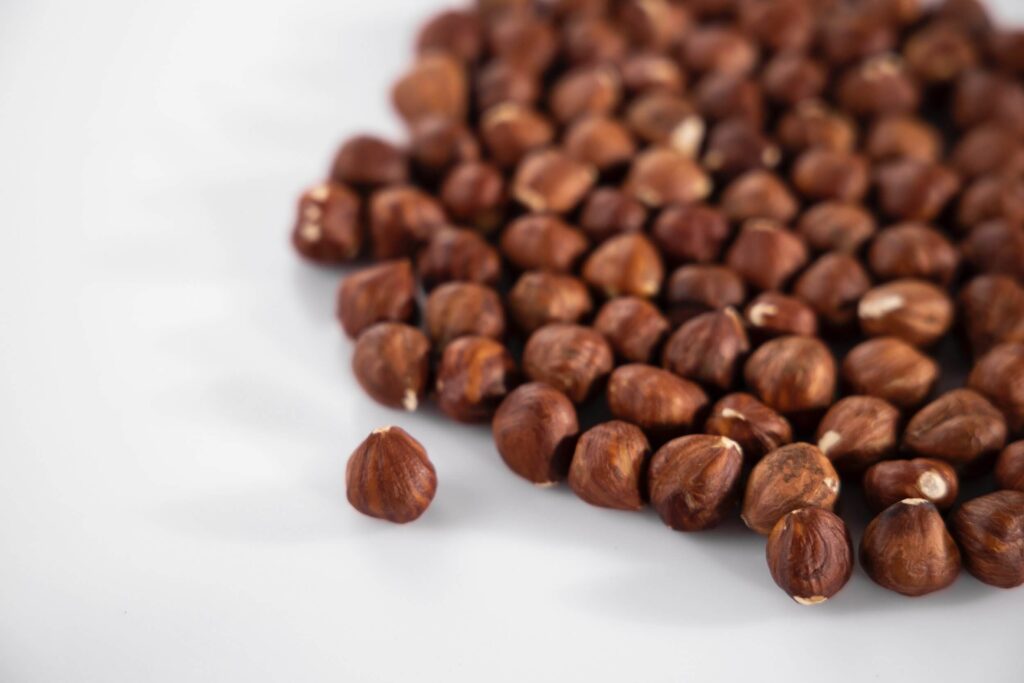
2. Brazil nuts
Brazil nuts are originally from the Amazon rainforest in Bolivia, Peru and Brazil. They have a buttery texture and a nutty flavour; people usually eat them blanched or raw. The nuts are high in energy and nutrition and are the purest food source of the mineral selenium. Despite what it’s popularly referred to as, the Brazil nut is a seed rather than a nut.
A 28-gram serving of Brazil nuts contains 187 calories, 4.1 grams of protein, 19 grams of fat, 3.3 grams of carbs, 2.1 grams of fibre and a host of other minerals & vitamins like selenium, manganese, zinc, magnesium, copper and so on. Selenium plays an essential role in maintaining immunity, boosting metabolic health and taking care of your thyroid gland.
The average Brazil nut contains about 175% of the required amount of selenium, making it highly effective in increasing or maintaining your selenium levels. A study of 60 people found that eating two Brazil nuts per day was as effective as taking a selenium supplement. Selenium is also known to decrease inflammation and protect the body from oxidative stress, which is an imbalance between antioxidants and free radicals that can lead to cellular damage.
Oxidative stress is associated with many serious ailments like cancer and Alzheimers. Foods like tuna, shrimp, brown rice, cottage cheese, eggs, and baked beans also have adequate quantities of selenium in them. Higher levels of selenium have been known to enhance immune function and provide better outcomes for pregnancy, heart disease, cancer, infertility, infections and mood disorders.
The anti-inflammatory effect of Brazil nuts can be felt by eating single but large doses or small doses over an extended period of time. A study conducted on 10 people noted that a single 20-50 gram serving comprising about 4-10 nuts reduced the number of inflammatory markers. Chronic inflammation remains one of the leading causes of metabolic concerns in people.
Follow-up studies demonstrated that once people stopped eating Brazil nuts, these measurements returned to their original levels. Long-term inclusion of Brazil nuts in one’s diet is required to reap its true benefits. Brazil nuts can be consumed dry as a snack or roasted in a skillet or in the oven. People can try adding Brazil nuts to pad Thai dishes, trail mixes or pesto. Alternatively, they can use chopped Brazil nuts as a nutritious topping for oatmeal, salads or even brownies.
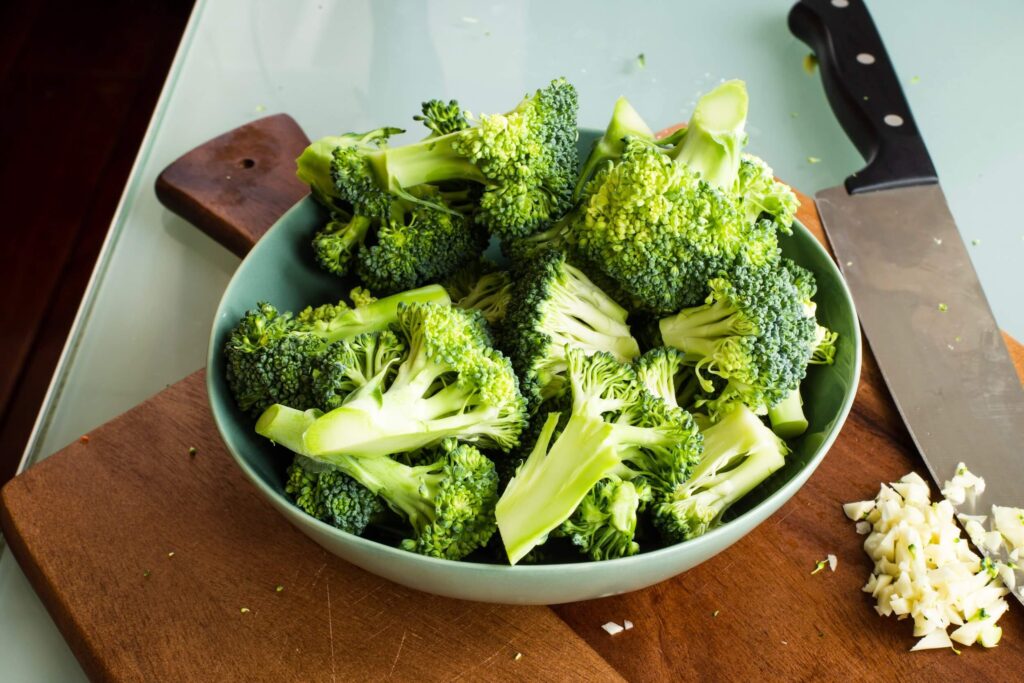
3. Broccoli
Broccoli is a well-known superfood and also one of the more common ones. Like most superfoods, it holds a wealth of nutrients & antioxidants that support many aspects of human metabolic health. It’s a cruciferous (part of the Brassica genus of plants) vegetable alongside kale, cauliflower, bok choy, collard greens, cabbage and so on.
Raw broccoli contains about 7% carbs, 3% protein, 90% water and almost no fat. It’s very low in calories, containing about 31 calories per 91 grams. Ninety-one grams of raw broccoli also contains 1.5 grams sugar, 2.4 grams fibre and 0.4 grams fat. Much like other superfoods, broccoli contains a range of antioxidants that prevent a host of diseases and cell damage believed to lead to cancer.
One such antioxidant is sulforaphane, a compound containing sulphur and said to give cruciferous vegetables their crunchiness. According to a 2014 study, broccoli can also have an anti-inflammatory effect due to its sulforaphane content. Inflammation is linked to type 1 diabetes, arthritis & weight gain. Broccoli plays a key role in making bile acids which help your body digest fat.
Bile acids are formed in the liver, stored in the gallbladder and released into the digestive system whenever one eats fat. Cholesterol is used to make bile acids in the body, amongst other functions. Bile acids help digest fats. The liver turns cholesterol into bile acids which are released into the digestive system when a person eats a fatty meal.
When all the fat has been absorbed by the body, and the bile acids have been used up, they’re reabsorbed into the bloodstream and used again. Bile acid sequestrants bind bile acids in the digestive system and prevent them from being reabsorbed. This helps reduce levels of cholesterol in the body. Broccoli has substances that bind with bile acids in the gut, helping in increasing excretion and preventing the bile acids from being reused.
This translates into the synthesis of new bile acids from cholesterol, reducing overall levels of markers such as total cholesterol, LDL, non-HDL, HDL and triglycerides in the body, reducing the risk of cancer and heart disease. One cup of broccoli can provide up to 2.3 grams of fibre and helps promote good gut health, and aid in weight loss.
Fibre helps keep blood glucose in check by slowing the absorption of sugar. Some interesting ways to eat broccoli are roasting it with other vegetables, stir-frying with sauces or even consuming it steamed/blanched. Some people also enjoy eating it raw, although gas and discomfort might be a side effect of that. It can also be used to make healthy soups and pasta sauces.
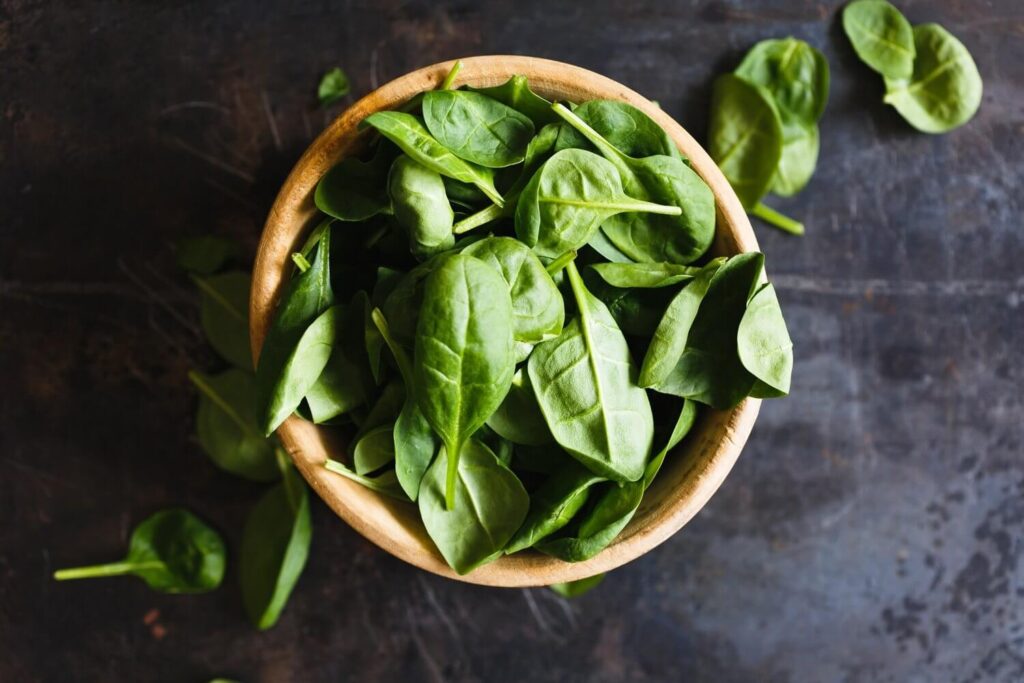
4. Spinach
Spinach superfood, the overall benefits of consuming spinach include lowering the risk of cancer and controlling blood glucose levels in people with diabetes for better metabolic health. Spinach can be incorporated easily into any diet; it’s cheap, readily available and easy to prepare. Spinach contains an antioxidant called alpha-lipoic acid, which is known to lower glucose levels, prevent oxidative stress and increase insulin sensitivity.
It is high in water and fibre, both of which help promote a healthy digestive tract and prevent constipation. Spinach also contains chlorophyll, and research suggests that it’s effective at blocking the carcinogenic effects of heterocyclic amines, compounds generated when grilling foods at high temperatures. This contributes to preventing the growth of cancer.
Spinach is also recommended for people with high blood pressure due to its high potassium content. Potassium helps in reducing the effects of sodium in the body. One cup of raw spinach contains 7 calories, 30 milligrams of calcium, 0.81 of iron, 0.86 grams of protein, 167 mg of potassium, 58 micrograms of folate and 2813 international units (IU) of Vitamin A.
It also contains fibre, thiamine and vitamin K. Vitamin K deficiency is linked to a higher risk of bone fracture. Adequate vitamin K consumption is essential for good health since it modifies bone matrix proteins, improves calcium absorption, and reduces the amount of calcium that leaves the body through urine. Vitamin A regulates the production of oil in skin pores and hair follicles and moisturises skin and hair.
Vitamin A is also vital for the growth of all tissues of the body, including hair and skin. It’s crucial in building & maintaining collagen, which provides structure to our skin and hair. Iron deficiency, too, can be prevented by eating spinach. Spinach can be consumed cooked or raw. It’s also available fresh, frozen or canned.
Spinach can be easily added to soups, pasta, casseroles and more. India has a wide variety of recipes that use spinach. It can be sautéed with olive oil and garlic and enjoyed as a stir fry. It can be added to a sandwich, flatbread or wrap and even dips, omelettes or smoothies. It is one of the most versatile superfoods.

5. Kale
Kale Superfood is a leafy green vegetable, part of the Brassica family comprising veggies like broccoli, brussel sprouts and cabbage. There are quite a few varieties of kale: dinosaur kale and Redbor. The leaves usually have an earthy taste and can be bitter, depending on the variety. Others, like Tuscan kale, have a sweeter, milder flavour. Kale tastes sweeter after it’s been exposed to a frost and is best enjoyed in fall and winter.
One cup of raw kale, or 67 grams, contains 2 grams of fibre, 3 grams of protein, 1 gram of carbs and 33 calories. A large portion of the fat in kale is an omega-3 fatty acid called alpha-linolenic acid. You can tell why kale is considered one of the most nutritionally rich foods. Adding more kale to your diet is a sure-shot way of increasing the total nutrient content of your diet.
Like other leafy greens and superfoods, kale is very high in antioxidants, including vitamin C and beta-carotene, as well as other polyphenols and flavonoids (they help your body function better while fighting daily stressors & toxins). The flavonoids such as quercetin and kaempferol have powerful heart-protective, anti-inflammatory, anti-viral, anti-cancer, anti-depression and blood pressure lowering effects. The antioxidants naturally help mitigate oxidative damage by free radicals in the human body.
Kale is also a weight-loss-friendly food and good for metabolism. It’s quite low in calories but helps you feel full due to its nutrient-dense profile. Since it’s low on calories and high on water content, it has a low energy density. Some studies show that eating enough foods with low energy density can aid with weight loss by limiting their calorie intake while helping them control hunger and maintain feelings of satiety for longer.
It also contains protein and fibre, two nutrients associated with weight loss. Kale is high in carotenoid antioxidants that are linked to reduced risk of cataracts and macular degeneration—two very common eye disorders. Kale is also high in several minerals and a great plant-based calcium source. Calcium is essential for bone health and many cellular functions.
An excellent source of magnesium, kale is a very important mineral we don’t get enough of. Adequate consumption of magnesium is said to protect against heart disease and type 2 diabetes. Kale is also potassium-rich. Adequate potassium intake has been linked to lower blood pressure and a lower risk of heart disease.
Significant advantage kale has over other leafy greens like spinach is that it’s low in oxalate, a substance found in some plants that can prevent minerals from being absorbed properly by the body. Vitamin C is an essential water-soluble antioxidant that is important for the synthesis of collagen, a protein that helps in the structure of skin and hair.
Kale contains about 4.5 times more vitamin C than spinach. A cup of raw kale overtakes an orange when it comes to vitamin C. Kale contains bile acid sequestrants known to lower cholesterol levels. This leads to a reduced risk of heart disease over time. A study found that drinking kale juice every day for 12 weeks increases HDL, or the “good” cholesterol, by 27% and helps lower LDL levels by 10%.
According to another study, steaming kale helps increase the bile acid’s binding effect. Vitamin K is essential for blood clotting. It activates certain proteins and gives them the ability to bind calcium. One single raw cup of kale contains almost 7 times the recommended daily amount of Vitamin K. You can eat kale raw, steamed, roasted, baked, etc.
Because it has a strong, sometimes bitter, taste, you can remove the stems and massage the greens before adding them to a salad. Simply adding dressing to the leaves doesn’t help or tenderise them well enough. You can pair it with pan-fried walnuts to give it an extra flavour. You can add it to soup—the long simmer time will soften it up. You can always add it to a green smoothie or just sauté it.
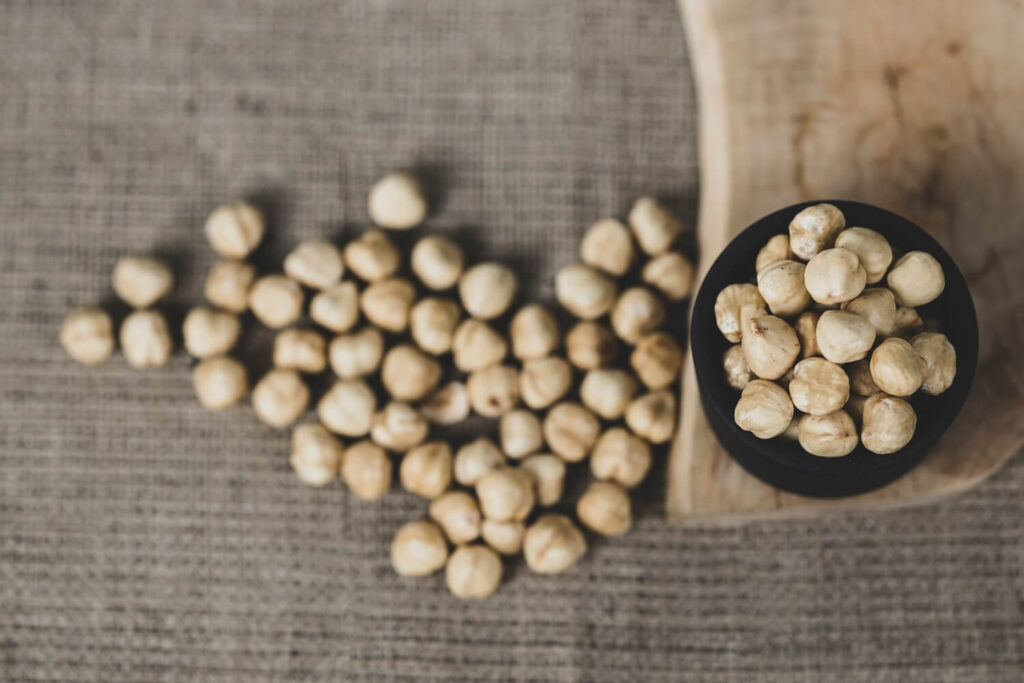
6. Chickpeas
Chickpeas Superfood, some anthropological evidence suggests that chickpeas or garbanzo beans originated in Turkey. They offer a variety of health benefits such as improved digestion, reduced risk of disease and weight management. This legume is super high in protein and can make for an excellent replacement for meat in a lot of vegan and vegetarian dishes.
There are quite a few varieties of chickpeas and can be found in beige, black, green or red colours. One hundred sixty-four grams of chickpeas provide up to 269 calories, and approximately 67% of these calories come from carbs; the rest can be attributed to protein and fat. An adequate amount of protein and fibre in chickpeas helps keep you full for longer, which helps in maintaining weight and metabolic health.
Protein increases the levels of appetite-reducing hormones in the body. The filling effect of protein and fibre may automatically lower how many calories you consume. A study saw that those who ate pretzels and chickpea-based hummus for an afternoon snack experienced a 70% reduction in appetite and a 30% increase in fullness.
Chickpeas are also an excellent source of plant-based protein, making them a go-to for people who are vegan. A study found that people who eat chickpeas regularly are 53% less likely to have a BMI over 30 and more likely to have a lower waist size than the people who don’t eat chickpeas regularly. Another review finds that people who ate at least one daily serving of legumes, such as chickpeas, lost 25% more weight than those who didn’t eat the.
These findings are promising, but more human studies are needed to determine the impact of chickpea consumption. Chickpeas can help manage your blood sugar levels because of their low glycemic index (GI), which determines how rapidly your blood sugar rises after eating something. Diets that include low GI foods help in managing blood sugar.
Chickpeas are rich in protein and fibre, and both help in maintaining blood sugar levels. A study found that 45 people who ate 300 grams of chickpeas per week had a noteworthy reduction in fasting insulin levels. Moreover, these studies associate chickpea intake with a reduced risk of heart disease and diabetes due to its ability to lower blood sugar levels.
Chickpeas are quite beneficial for digestive health. The fibre present in chickpeas is mostly soluble in that it blends with water to form a gel-like substance in your tract and helps increase the type and number of healthy bacteria in your gut, limiting the growth of unhealthy bacteria. Chickpeas also promote the body’s production of butyrate, a fatty acid that helps reduce inflammation in colon cells, possibly helping reduce the risk of colon cancer.
Chickpeas also contain saponins, plant compounds that too deter the development of certain cancers. Saponins have been studied for their role in inhibiting tumour growth. Chickpeas are also believed to support brain function and mental health by providing choline, an essential nutrient that plays an important part in producing specific neurotransmitters that act as chemical messengers for the body’s nerve cells.
Vital for infants, its role in the health of adults is still under research. The magnesium in chickpeas helps with nerve function. Minerals like zinc, selenium & magnesium help protect against depression and anxiety.
Chickpeas can be eaten boiled or brined and added to salads, sandwiches and soups. They’re also the main ingredient in hummus. The dip is incredibly versatile and can be added to tacos or wraps or eaten with veggies like carrots or cucumbers.
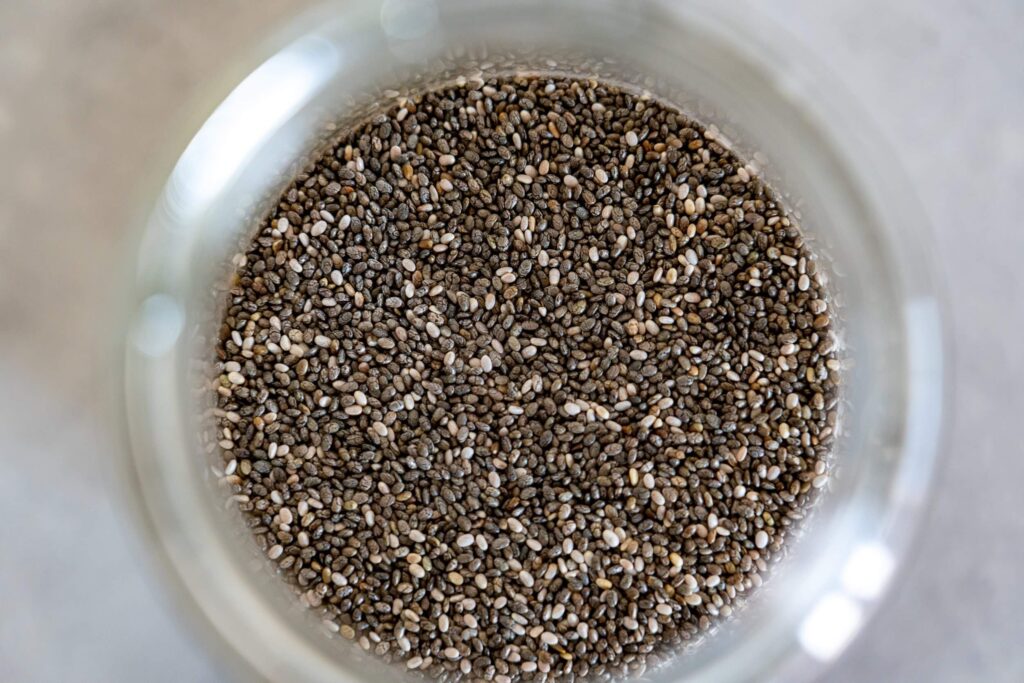
7. Chia seeds
You may know chia seeds as the tiny black or white seeds you add to coconut milk puddings or your smoothie bowls. They’re native to Central America and come from the plant Salvia hispanica. It’s believed that Mayan and Aztec civilisations used the seeds for religious rituals, medicinal purposes and cosmetics.
Today, chia seeds have become the hottest word in the wellness & fitness industry. Twenty-eight grams of chia seeds contain 138 calories, 4.7 grams of protein, 8.7 grams of fat, 11.9 grams of carb, and 9.8 grams of fibre. They’re a great source of omega-3 fatty acids, fibre, iron and calcium.
This nutritional profile is pretty impressive, considering that it’s only for about two tablespoons. A high fibre diet and increased fibre intake have been shown to aid with weight loss. A diet rich in fibre feeds gut bacteria and helps them thrive, making them increase in number and type.
This helps thicken the mucus wall and form a stronger barrier between our body and the bacteria population. The mucus wall aids in lowering inflammation and helps in digestion. A 2017 study on the effect of chia seeds on blood glucose suggests that chia seeds might have the ability to convert glucose into a slow-release carbohydrate, positively affecting people with type 2 diabetes.
High fibre diets are linked to a lower risk of developing diabetes and help to keep blood sugar levels stable. Chia seeds can be added to smoothies, dips, puddings, oatmeal, bread and other baked goods. Mixed with water, chia seeds can replace eggs in vegan cooking. They’re usually eaten by being added to some other food or soaked in water prior.
Consuming excessive chia seeds is not without its risks. Chia seeds are said to absorb up to 27 times their weight in water, and dry chia seeds can potentially cause esophageal obstruction, a superfood quality. It’s important to mix chia seeds in water or some other sort of food before consuming them, especially when you’re serving them to younger children.
Conclusion
Some plant-based foods packed to the rafters with vitamins, minerals and antioxidants are considered superfoods. They have gained popularity in the recent past for their nutritional benefits. While flaxseeds are said to have about 800 times more lignans with anti-inflammatory effects than other plant foods, selenium-rich brazil nuts are known to prevent thyroid disease.
Kale is high in carotenoid antioxidants that are associated with a reduced risk of cataracts and macular degeneration. Spinach with alpha-lipoic acid is known to lower glucose levels, and research suggests that broccoli can prevent cancer due to its sulforaphane content. Protein-packed chickpeas induce satiety and aid weight loss.
Chia seeds help to combat insulin resistance. Superfoods are easy to consume and can be added to various foods in a variety of diets with little to no preparation. Regular consumption of superfoods has also been linked to lower overall mortality risk and better complexion, hair, nails and energy levels. Due to the marketing machinery in place that ferociously pushes these superfoods, it’s important to bear in mind to consume a healthy, balanced diet that includes them but doesn’t make them the central focus of the diet itself.
Disclaimer: The contents of this article are for general information and educational purposes only. It neither provides any medical advice nor intends to substitute professional medical opinion on the treatment, diagnosis, prevention or alleviation of any disease, disorder or disability. Always consult with your doctor or qualified healthcare professional about your health condition and/or concerns and before undertaking a new health care regimen including making any dietary or lifestyle changes.
References



